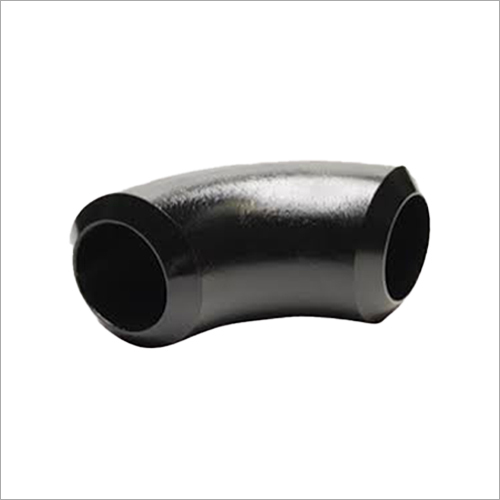Seamless Elbow
Product Details:
- Product Type Elbow
- Material Mild Steel
- Standard ASME
- Section Shape Round
- Color Black
- Warranty 1 Year
- Usage Industrial
- Click to View more
Seamless Elbow Price And Quantity
- 50 Piece
- 51 INR/Piece
Seamless Elbow Product Specifications
- ASME
- Black
- Mild Steel
- Elbow
- Round
- 1 Year
- Industrial
Seamless Elbow Trade Information
- Cash in Advance (CID)
- 100000 Piece Per Month
- 2 Days
- All India
Product Description
By forming a gentle and smooth curve, a seamless elbow is a type of pipe fitting used to alter the direction of a pipe system. The reason it is referred to as "seamless" is that it is made from a seamless pipe with no welded connections or seams.
Industries like oil and gas, chemical, petrochemical, power generation, and construction frequently employ seamless elbows. They guarantee smooth fluid flow and reduce pressure drop by offering a dependable and leak-proof connection between pipes.
Depending on the exact purpose and the type of fluid being delivered, these elbows are often composed of materials like carbon steel, stainless steel, or alloy steel. Temperature, pressure, corrosion resistance, and fluid compatibility are all considered while choosing a material.
To fit diverse piping systems, seamless elbows come in a range of sizes, shapes, and angles. The most typical angles are 90 degrees, 45 degrees, and 180 degrees, but it is also possible to produce unique angles to match the needs of a certain project.
In order to make seamless elbows, a solid cylindrical billet or bar is heated and then hollowed down using a rotary piercer or piercing mill. To give the pipe the necessary elbow curvature, the pipe is then put through a series of hot or cold shaping procedures.
Compared to welded elbows, seamless elbows provide a number of benefits. They have internal surfaces with less roughness, which reduces pressure loss and friction. Because there are no welds, they are stronger and more reliable. Seamless elbows also offer improved corrosion and fatigue resistance.
It is crucial to adhere to industry standards and recommendations for proper alignment, support, and installation methods while installing seamless elbows. To guarantee a tight and leak-free connection, adequate sealing techniques like gaskets or welding should be utilised.
Overall, seamless elbows are essential parts of pipe systems because they offer flexibility, toughness, and effective changes in flow direction.

Price:
- 50
- 100
- 200
- 250
- 500
- 1000+
Other Products in ' Pipe Fittings' category
GST : 19ALVPP1192L1Z7







 Send Inquiry
Send Inquiry Send SMS
Send SMS
